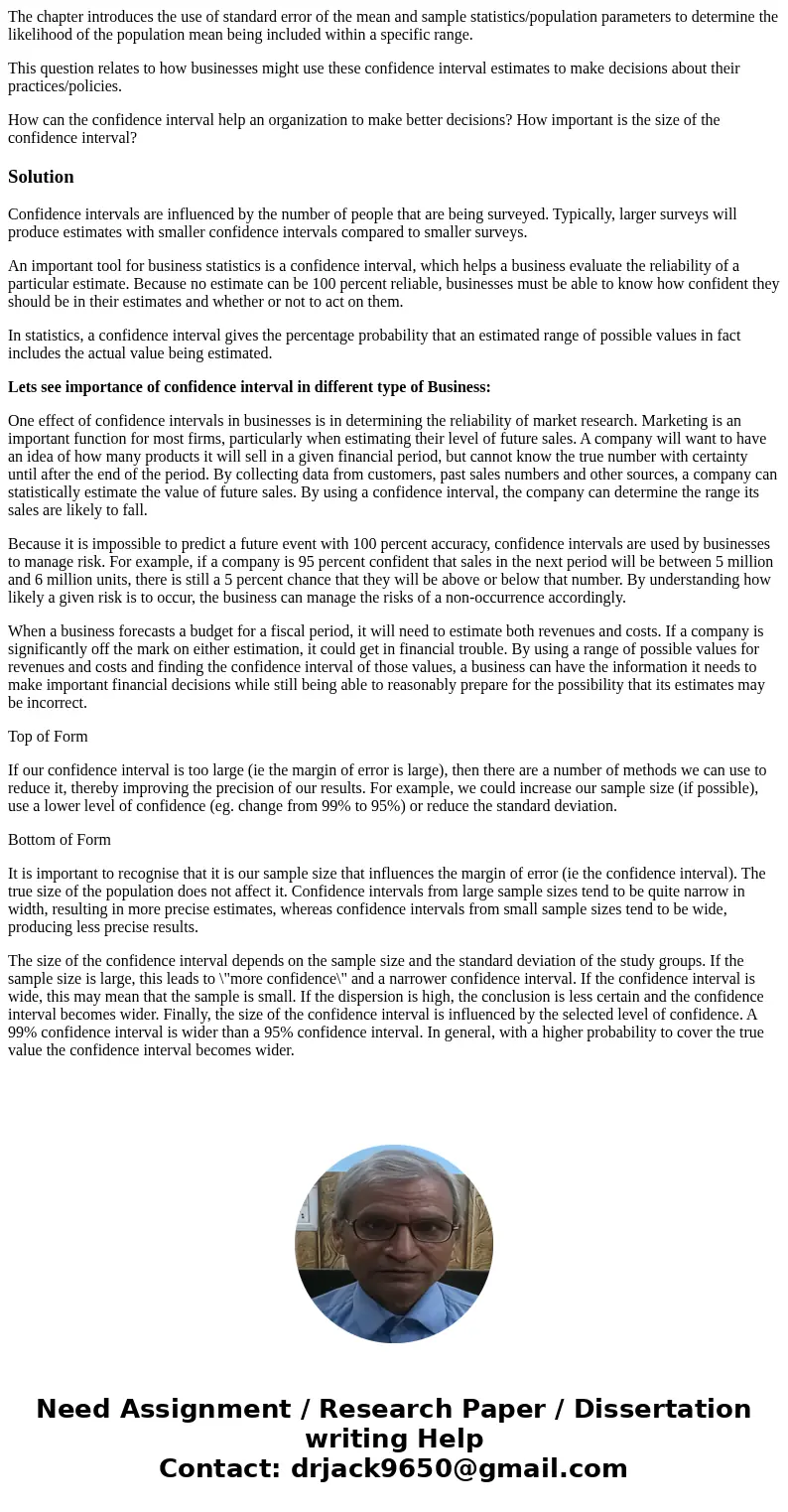The chapter introduces the use of standard error of the mean
The chapter introduces the use of standard error of the mean and sample statistics/population parameters to determine the likelihood of the population mean being included within a specific range.
This question relates to how businesses might use these confidence interval estimates to make decisions about their practices/policies.
How can the confidence interval help an organization to make better decisions? How important is the size of the confidence interval?
Solution
Confidence intervals are influenced by the number of people that are being surveyed. Typically, larger surveys will produce estimates with smaller confidence intervals compared to smaller surveys.
An important tool for business statistics is a confidence interval, which helps a business evaluate the reliability of a particular estimate. Because no estimate can be 100 percent reliable, businesses must be able to know how confident they should be in their estimates and whether or not to act on them.
In statistics, a confidence interval gives the percentage probability that an estimated range of possible values in fact includes the actual value being estimated.
Lets see importance of confidence interval in different type of Business:
One effect of confidence intervals in businesses is in determining the reliability of market research. Marketing is an important function for most firms, particularly when estimating their level of future sales. A company will want to have an idea of how many products it will sell in a given financial period, but cannot know the true number with certainty until after the end of the period. By collecting data from customers, past sales numbers and other sources, a company can statistically estimate the value of future sales. By using a confidence interval, the company can determine the range its sales are likely to fall.
Because it is impossible to predict a future event with 100 percent accuracy, confidence intervals are used by businesses to manage risk. For example, if a company is 95 percent confident that sales in the next period will be between 5 million and 6 million units, there is still a 5 percent chance that they will be above or below that number. By understanding how likely a given risk is to occur, the business can manage the risks of a non-occurrence accordingly.
When a business forecasts a budget for a fiscal period, it will need to estimate both revenues and costs. If a company is significantly off the mark on either estimation, it could get in financial trouble. By using a range of possible values for revenues and costs and finding the confidence interval of those values, a business can have the information it needs to make important financial decisions while still being able to reasonably prepare for the possibility that its estimates may be incorrect.
Top of Form
If our confidence interval is too large (ie the margin of error is large), then there are a number of methods we can use to reduce it, thereby improving the precision of our results. For example, we could increase our sample size (if possible), use a lower level of confidence (eg. change from 99% to 95%) or reduce the standard deviation.
Bottom of Form
It is important to recognise that it is our sample size that influences the margin of error (ie the confidence interval). The true size of the population does not affect it. Confidence intervals from large sample sizes tend to be quite narrow in width, resulting in more precise estimates, whereas confidence intervals from small sample sizes tend to be wide, producing less precise results.
The size of the confidence interval depends on the sample size and the standard deviation of the study groups. If the sample size is large, this leads to \"more confidence\" and a narrower confidence interval. If the confidence interval is wide, this may mean that the sample is small. If the dispersion is high, the conclusion is less certain and the confidence interval becomes wider. Finally, the size of the confidence interval is influenced by the selected level of confidence. A 99% confidence interval is wider than a 95% confidence interval. In general, with a higher probability to cover the true value the confidence interval becomes wider.

 Homework Sourse
Homework Sourse